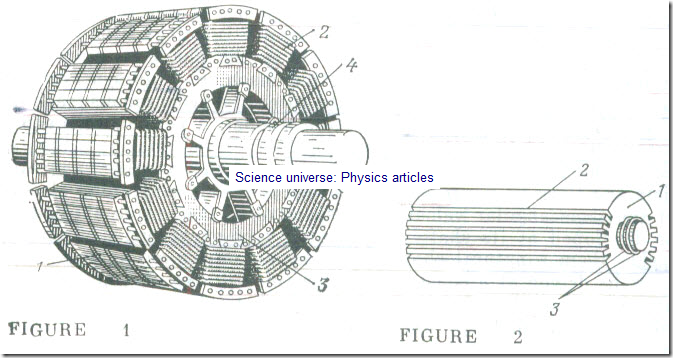Synchronous Machines
General
Synchronous machines are called “Synchronous” because in a steady state their rotors are running at the angular velocity of the rotating magnetic field set up by the currents in the phase windings of a stator similar to that of an induction machine. ,This synchronism is achieved owing to the fact that the rotor of a synchronous machine is usually an electromagnet or, more seldom, a permanent magnet with as many pole pairs as there are of them m the rotating magnetic field . the interaction between the poles of the rotating magnetic field and those of the rotor assures that the rotor is spinning always at the same angular velocity, irrespective of the torque applied to or developed at its shaft .This property of synchronous machines makes them a natural choice as drive motors for mechanisms that must e driven at a constant angular velocity . Synchronous motors are not so popular as induction motors , but there are applications. such as metal-making, where they are indispensable. Synchronous motors come in ratings of several megawatts.
The principal field of application for synchronous machines is in the form of generators at electric power stations .Their rating may be as high as 1500 MVA per unit.
Construction of a Synchronous Machine
A synchronous machine consists essentially of a stator and a rotor, the stator being similar to that of an induction machine (see Fig 1). The stator core is built up of electrical-sheet steel laminations insulated from one another and is secured within a substantial frame. On its inner surface the stator has slots which receive an a.c. winding, mostly three-phase.
The rotor of a synchronous machine is a salient-poIe electromagnet (Fig 1 were the poles are at , the pole coils at 2, the rotor core at 3, and slip-rings at 4) . Alternatively it may be a cylindrical or nonsalient-pole type (such as in fig .2 where the rotor core is at 1, the slots are at 2, and the slip-rings at 3) . Current from an external source, called the exciter, is conveyed to the rotor winding via the slip-rings and brushes.
In a multipole synchronous machine the rotor has p pole pairs, and the currents in the stator winding likewise produce p pole pairs .of a rotating magnetic field (as in the case of an induction machine). The rotor must revolve at the same velocity as the magnetic field, so its synchronous speed is
n = 60f/p (15.1)
At a standard power (commercial) freque.ncy of 50 Hz, the maximum "peed for a two-pole machine (p = 1) IS 3000 rpm. This is the
speed of a present-day steam-turbine generator set consisting of a steam turbine as the prime mover and a nonsalient-pole synchronous generator.
In a hydraulic-turbine generator set the turbine runs at a relatively low speed. Because of this, the associated generator has to be made of the multi pole, salient-pole type, mostly with a vertical shaft. The speed of such generators ranges from 60 to several hundred revolutions per minute, so there must be several tens of pole pairs. Since they run at relatively low speeds, hydraulic-turbine-driven generator" have a substantially greater mass per unit power (over 8 kg kV-1) than steam-turbine-driven generators (less than 2.5 kg kVA-1).

